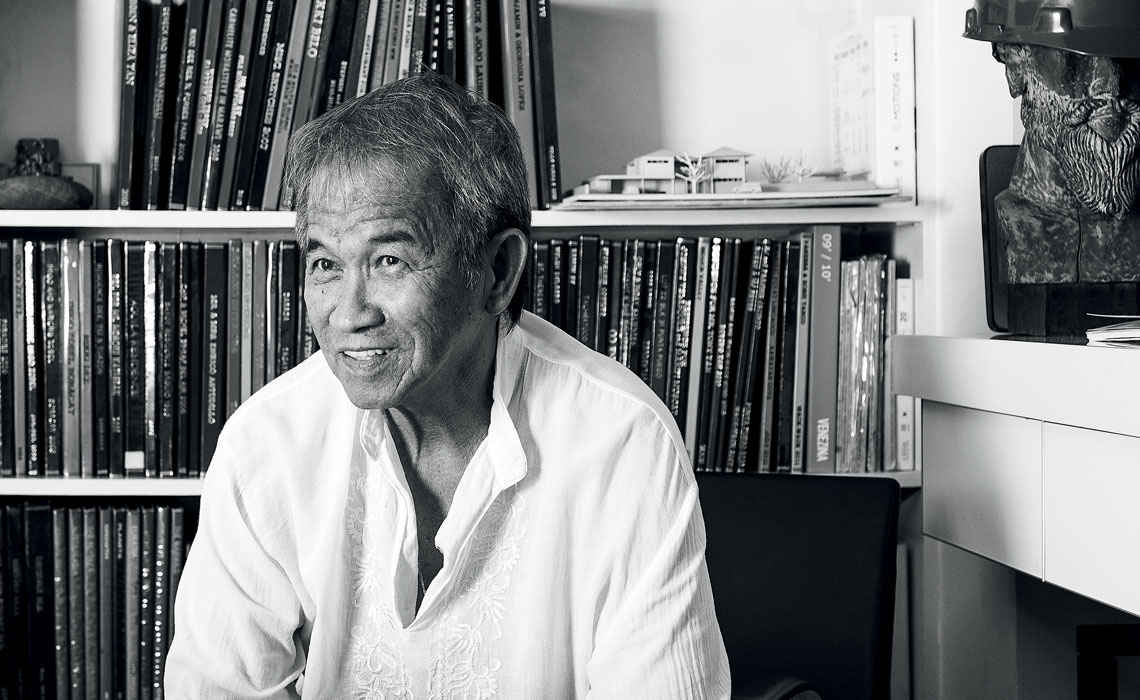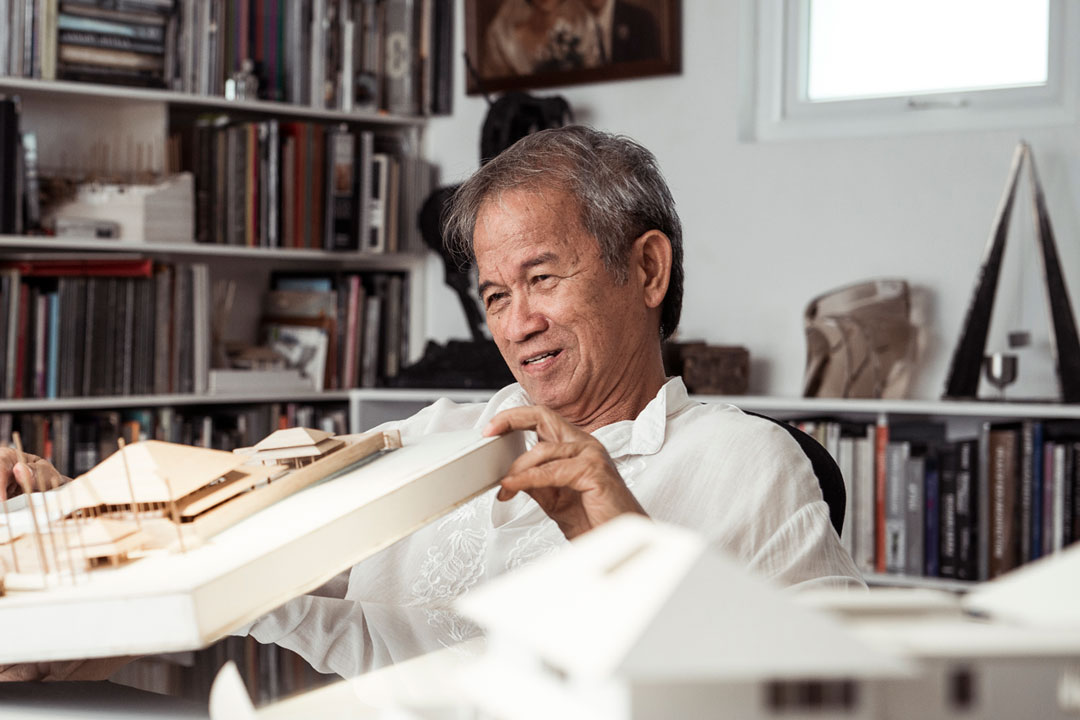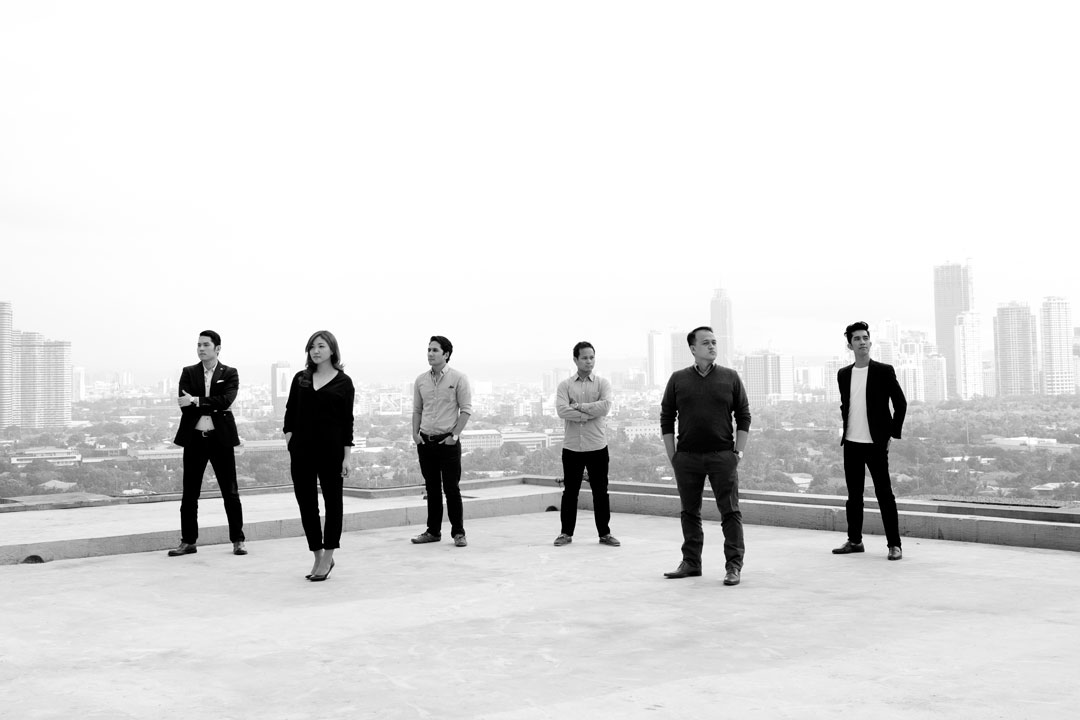
Leandro V. Locsin Partners’ Ed Ledesma on Protégés
Thanks to this undertaking, BluPrint discovered that the notorious shyness and introversion of Ed Ledesma belies a profoundly generous spirit. First, he surprises by naming not one, not two, but six protégés handpicked based on “gut feel” and his experiences with them. One of the protégés recounts: “He simply approached each of us, gave us a printed copy of BluPrint’s letter, patted us on the back with a smile, and left.” Then, he grants us a heartfelt interview, lavishly pouring praise for the six, and sharing why mentoring and sponsoring young talents is a worthwhile endeavor. His example embodies what this sponsor-sponsee finding mission is all about: magnanimity reflected in an acute sense of forward-thinking that goes beyond one’s interests.
Editor’s Note: In 2015, BluPrint published a special issue called From Peer to Protégé in which the editorial team asked some established architects to cite young and promising talents that have caught their eye.
Protégés
by Ed Ledesma
I chose these six based on personal instinct. It’s a gut feel. You know, I know a lot of architects who have gone up the career ladder because they have a lot of connections. Or, they have talented staff or talented partners. But when I look at them now, I still think of them as average. These six architects I believe will be successful because they are genuinely talented. Talagang magaling sila mismo.
Of course, they’re still all very young. They still have to prove themselves. My challenge for them always is, when they finally get their first major solo project, it should be really unique or out of the box, because that is the project that will land them the next, and that’s when they’ll start to grow. That’s how I started, too—I am not a sociable person, an introvert. So one can’t say I got my projects through connections because I hardly made any. It was my previous work that got me my next projects. My body of work spoke for itself. These six are the ones who have the potential to achieve that. They come up with what I believe are iconic designs. Plus, some of them are also well-connected, and all of them are sociable and good with people too, and I admit that’s also important for getting a lot of projects and being more successful in this industry.
We’ve had architects come through here who are now very successful: Royal Pineda, Lorraine Yu. With them, as with these six architects, I would be working with them from the very start—design process, meetings, all of that, so they will be asking a lot of questions. But then, halfway through the construction of the house, I won’t be with them anymore. They would have gotten almost everything correct—whether it’s an important architectural detail, or how the floor should terminate, or whether the roof should be pointed, what kind of wood or stone should be used—they absorb it quickly. I don’t have to go to the site anymore. That’s what I like about them, that’s how they earned my trust. I think, the less you come to me for questions, the better you are doing.

It’s okay to ask questions if you’re really not sure, but once you start becoming more independent, that’s how I know you’re doing well. Not everybody will be fast learners, and some will make mistakes. If someone makes a mistake, I take the blame for it. But as for Quito, JP, Jiddu, Sudar, Crystal and Aldo, I am confident in their abilities. I trust them. It’s not just anybody here in this firm to whom I can give a house without qualms and trust that they will deliver. So when I have a residential project, I would choose them.
We don’t expect them to stay in Locsin forever. But the nice thing about them is, they’re not in any hurry. They’re here to learn. And they’ll learn a lot here, because we do a wide variety of projects—buildings, museums, hotels, houses. I always love to work with them especially at the beginning stages—designing, conceptualization—we always do it together. I’ve seen people here who left after only a couple of years, but even though they became successful in their own right also, I often think hindi pa sila luto.
Though they learn a lot from me, my attitude is always that I can also learn from them. I don’t just ask them to watch me sketch or something. I really sit down with them and ask them to sketch something, then we put it together. The owner is always part of the design process too. So everyone really is involved in the project.
If we have to rank qualities that I would want in a protégé, it would be loyalty first. One prime example is Royal Pineda. I mentored him, I worked with him when he was with us here in Locsin. One time, I assigned him to a project in Bacolod. But before he finished the project, he got an offer that no sane person should refuse, from Budji Layug. He approached me and said, “I will not leave you, sir.” And I was the one who told him, “No, you go. Because you will never get an offer like that again.” And look at him now! So he was very loyal, and I think it’s innate in him, and he took it with him in his new practice with Budji. I think that’s one of the things that made him successful.
READ MORE: Aidea Philippines’ Jojo Tolentino on Developing Architects
I also think one must be passionate, as opposed to ambitious. Ambitious has a bit of a negative connotation, right? And it doesn’t matter if you have different passions from me. That way, I learn from you too. In contrast, if I have to ask someone over and over whether he or she wants to do something, kailangan pang pilitin, I don’t think that’s protégé material. Because you can be a slow learner, or your talents may not be as developed as the others, but if you are eager and you show me that you are willing to learn, then that’s better than someone who you have to keep coaxing or prodding.
To develop their talents, I do my best to give them exposure. It’s up to them if they want to be influenced by me, or how I execute projects. If my ways work for them, then good. I share a lot of things with them, but whether they will eventually practice the same way, it’s their choice. Each of them will find their own niche and they don’t have to be exactly like me. What is important is lots of exposure and experience.
In five or six years, you’ll hear about these six. You’ll see their names, not just in our local newspapers and magazines, but also in the international circuit. It’s very possible.

Hearing from the protégés:
Sir Ed really taught me to sit down and reflect on what is truly meaningful, to distill the essence of what you really want to say. In an age where technology and pop media prods all of us to produce overreaching, flashy yet superficial work—a sort of global Dona Victoriña effect—I had a wise mentor show me that works with restraint and depth can hold incredible integrity. Most of all, he showed me that you can be a great success but still maintain genuine humility. For instance, he was the Partner intimately in charge of the Istana Nurul Iman—the largest residential palace in the world—but you’ll never see him flaunt it. He prefers to just focus quietly on doing great work. A bit like a Howard Roark, but more like Santa Claus, I think. He calls himself shy. I call him brilliant. -Aldo Mayorlago
The magic is in Sir Ed’s mentoring. You can’t expect to sit down with him all day every day, you have to figure out a lot of things on your own. He allows you so much room for growth, including room for mistakes as long as you strive not to repeat them. Those moments one gets to work alongside him, those are the moments that matter, and can be potentially game-changing. Sir Ed says it like it is. And I love that. It can be hard to take critique, but you have to understand that it’s a good path to maturity. Because of our culture, we tend to question the validity of critique from other architects, but if a neophyte like me can’t take critique from someone like Sir Ed, then that person’s got a problem. -JP de la Cruz
I will always remember one particular design exercise we did for a church in a beautiful mountainous site in Antipolo. We all designed quite energetically since everyone was inspired by the site and its possibilities. We had digital models, cool renderings and wild ideas that we presented and discussed with the whole office. Then finally, here comes Sir Ed’s scheme, with one sketch plan and one sketch elevation and it just blew everything out of the water completely. This is one example that proves the value of discerning that one essential idea is critical in releasing a project’s power. This has always been Sir Ed’s magic and we all aspire to that level of expertise someday. It is really amazing and inspiring to be schooled by such a master. -Sudarshan Khadka ![]()
This story first appeared as “Passion for Learning” in BluPrint Special Issue 1, 2015. Edits were made for Bluprint.ph.


